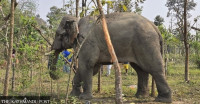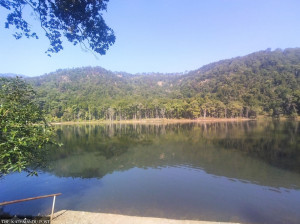Sudurpaschim Province
Shuklaphanta National Park sees decline in swamp deer population
As per the record of the SNP, the number of swamp deer stands at 2,246 in 2019; a gradual decline from 2,301 in 2014.
Bhawani Bhatta
The number of swamp deer (Cervus duvauceli), locally named Bahrasinga, has decreased in the Shuklaphanta National Park (SNP) in the last couple of years, according to a recent census conducted by the SNP administration.
As per the record of the SNP, the number of swamp deer stands at 2,246 in 2019; a gradual decline from 2,301 in 2014.
Laxman Prasad Paudyal, the chief conservation officer at the SNP, said that death by natural causes and tiger predation may be the reasons behind the decline in swamp deer population. According to a 2018 tiger census, there are 16 tigers in the park.
The SNP can accommodate 2,000 to 2,500 swamp deer at a time and the average lifespan of the animal is around 18 to 20 years.
Two years ago, 10 swamp deer from the SNP were relocated to the Bardiya National Park and Chitwan National Park for rehabilitation.
Established as a national park in 1976, Shuklaphanta is the country’s second youngest national park, after Parsa National Park, and is the main habitat of swamp deer. Conservationists say that the largest herd of swamp deer in Asia can be seen in the grasslands of Shuklaphanta.
Along with the deer census, the SNP and National Trust for Nature Conservation conducted a blue bull count for the first time in Shuklaphanta. As per a recent blue bull census, there are 82 blue bulls in the park. However, in 2013, a study report estimated that there were more than 90 blue bulls in the park. The park is also home to tigers, rhinos, reptiles, amphibians, and various bird species.




 7.12°C Kathmandu
7.12°C Kathmandu












